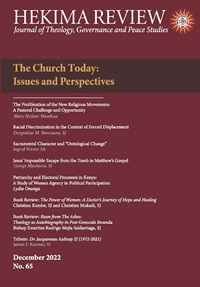A Parable’s Semantic Resistance to Domestication: Reconsidering the Parable of the Two Debtors and the Creditor (Luke 7,42-43)
Keywords:
Parable of the Two Debtors and the Creditor, Semantic Resistance, DomesticationAbstract
A keen look at the Greek text of Luke 7:36-50 reveals interesting details about the theme of forgiveness that Luke is pursuing in the pericope. Whereas in the parable (42-43) Luke uses χαρίζομαι, he uses ἀφίημι to refer to forgiveness in the material that comes after the parable (vv. 47,48,49). This begs the question; Why are there different verbs for the same concept in the same pericope? In other words, is it an issue of mere variation, or the parable is promoting a concept that is different from the one that Luke is shaping in the pericope? This article seeks to address this question. The basic argument is that the original parable of Jesus was open-ended and one that could be read in a multivalent manner. However, in this pericope, Luke interprets and appropriates existing material to shape the theme of forgiveness. It shall be argued that Luke ends up domesticating the parable of the two debtors and creditor as one that solely teaches about sin and forgiveness. Through an exegetic venture, an effort will be made to show that this parable, as is the case of Jesus’ parables, is polyvalent. It will be argued that this parable talks more about generosity and less about sin and forgiveness.
Downloads
Downloads
Published
Issue
Section
License
Copyright (c) 2024 Hekima Review

This work is licensed under a Creative Commons Attribution-ShareAlike 4.0 International License.


